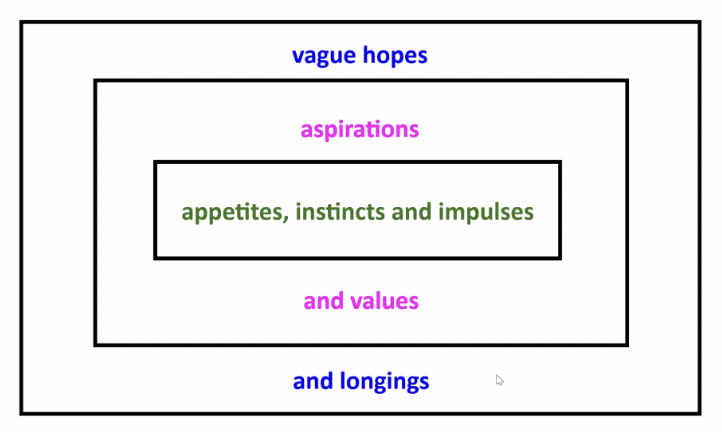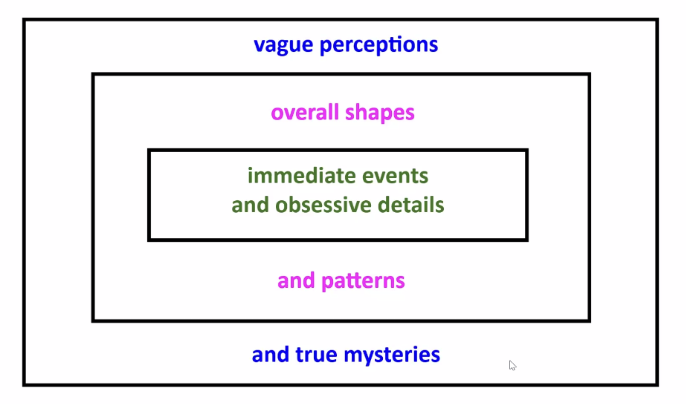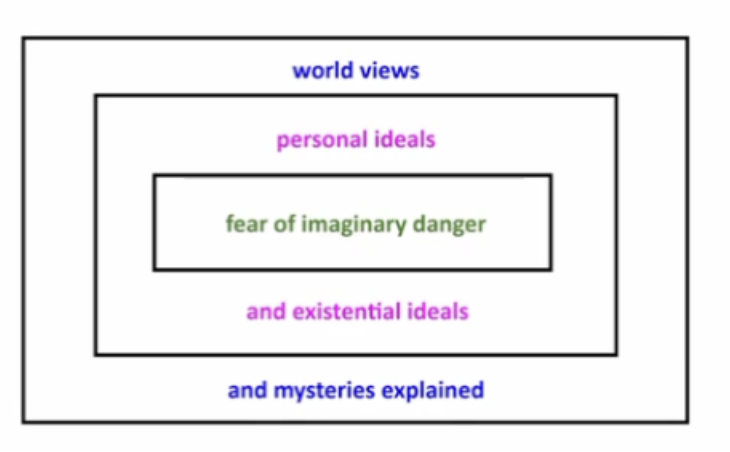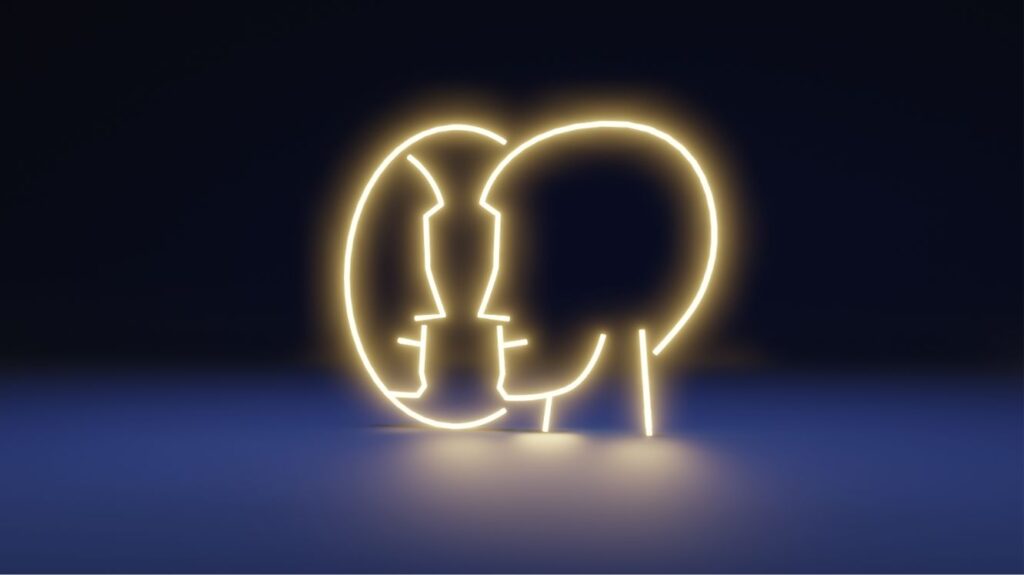
Structure
A structure consists of different elements with a relationship to each other.
Structural Tension
Structural Tension is created by the difference between 2 elements:
- Current Reality: Where you are
- End Result (goal / vision): Where you want to go
Outcome: The difference between the 2 points creates a tension which resolves towards the end result, because tension always seeks resolution. It’s pure physics.
Structural Conflict
Structural conflict emerges when there is a third element in the structure. That can be:
- Organisational level: Another conflicting goal.
- Personal level: Concepts & Identity.
Outcome: The structural conflict creates oscillation between either the 2 conflicting goals (organisational level) or between end result and concept (personal level). That means a back and forth oscillating movement between these 2 elements. The closer one comes to the desired end result and resolves this tension, the more tension builds up to the concept or conflicting goal. Which then leads to resolving this tension.
The 3 elements of structure
Robert Fritz invented and taught this model. It’s based on the idea that our focus is similar to a camera, which can zoom in or out as follows:
- Close up: You see the flower.
- Medium shot: You see the garden the flower is in.
- Long shot: You see the mountains and nature surrounding the garden.
Element: Dynamic Urge
What you (un-) consciously want to create.

- Close up: Appetites, instincts and impulses
- Instinctual and reactive.
- Focus: is on short term, you want it now.
- E.g. eat, sex
- Medium shot: Aspirations and values
- Aspirations: means what you love to create for its own sake.
- Value: simply means what matters most to you.
- Focus: is on long term, you can delay gratification.
- E.g. building a career, taking care of your children.
- Long shot: Vague hopes and longings
- Focus is far away.
- E.g. one day: I write a book, my prince will come, I’ll live on a tropical island.
We all have all of them. In itself nothing is wrong with them. The medium frame is where we predominantly want to be.
Element: Current Reality
The actual situation: Where we currently are in relation to our dynamic urge.

- Close up: Immediate events and obsessive details
- E.g. focus on a spot on the floor and exclude everything else. You’ll see lots of details. But might lose the context and be overwhelmed by all the details.
- Medium shot: Overall shapes and patterns
- Preferred place to be. If you need more details zoom in, but then out again.
- Long shot: Vague perceptions and true mysteries
- Philosophical and spiritual questions: Why are we here? What is the meaning of life? Is there a god? What happens after death?
- Thinks we will never intellectually and factually understand and ‘know’, but can only experience.
Element: Concepts
The concepts you have in relationship to your dynamic urge.

- Close up: Fear of imaginary danger
- Imagining worst case scenarios. Then it’s about doing everything to prevent that imagined scenarios to feel safe. There is no objective risk assessment (reality), just assumption it’s dangerous.
- E.g. you can’t have what you want. You can’t trust people / yourself. The world is dangerous.
- Illustration: Woman changed job all the time: “boss is bad, hate my job”, scared to lose her job, fear if she did, she wouldn’t survive and lose friendships. She put it to the extremen and manipulated her boss into keeping her and not be fired.
- It’s a matter of freedom vs. control
- Medium shot: Personal ideals and existential ideals
- Personal ideals:
- Negative unwanted beliefs, e.g. unworthy, unlovable, stupid, nothing special. Unconsciously it’s not ok to think X of you, you should think Y about you.
- Therefore an ideal – the opposite of what you belief – is created to hide the unwanted belief to yourself.
- People here can be quite manipulative, because they do thinks to make others like them. Which means others are not free to not like them.
- Some ideals are there because we learned them: “With 30 we should have kids, with 40 we should have a house” Those are not conceptual ideals, which are always compensations for an unwanted belief.
- Ideals e.g. Stupid –> Be very smart
- Existential ideals:
- They have to earn their right to exist. And do good things to justify their existence. Out of obligation, and no matter how much they do, it’s never enough.
- Personal ideals:
- Long shot: Worldviews and mysteries explained
- Here we give answers to philosophical, political, spiritual, religious… questions and treat them as they were true. And try to convince others to believe the same. The reason for wars. Better “I believe in god, but I could be wrong.
We all have all the stuff – the question is where are we predominantly and what do we take actions on? If we take actions on concepts, we are in an oscillating structure. Concepts are neither positive or negative. They are simply not in reality. Reality is physics, structural tension, where creation happens – and you want to be there.
Conclusion
Robert Fritz was hesitant to introduce the frames in the context of Structural Consulting, as this could lead to a ‘search & destroy mission’. It’s a form, but not a formula. As mentioned several times in Structural Thinking & Structural Consulting you always start with nothing and put all your concepts away. It’s about original thinking with an original human being in front of you. Therefore this concept is to be used after a consultation session.
Lasting change comes from a change in structure. By thinking it through and realizing what is true and what isn’t (the concept). Then the concept falls out of the structure and the shift happens. And a new river bed is carved out life can flow through.
